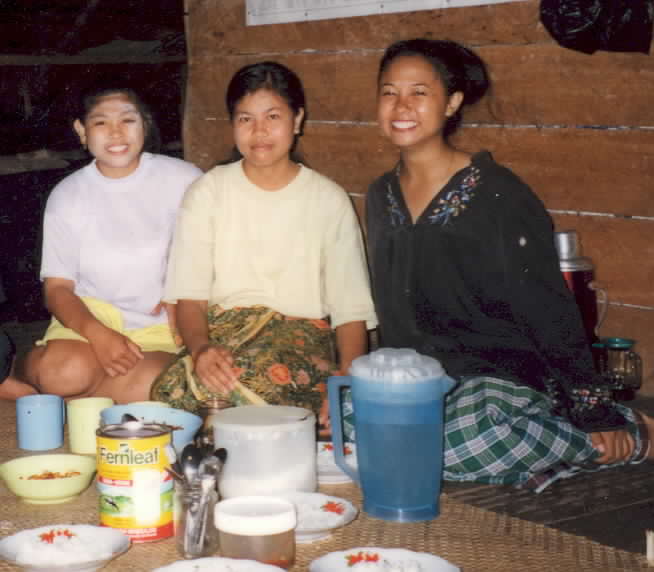 Social Organization and Ecology of
Mentawai Leaf Monkeys (Presbytis potenziani) in West Sumatra, Indonesia
Social Organization and Ecology of
Mentawai Leaf Monkeys (Presbytis potenziani) in West Sumatra, IndonesiaMentawai leaf monkeys (Presbytis potenziani) are endemic to the Mentawai Islands, Indonesia. There is little documentation of their social behavior or ecology. Prior to this project, Mentawai leaf monkeys had never been habituated nor been the subject of any study exceeding 200 hours of visual contact. Previous studies suggest that they lived exclusively in one-male, one-female social groups throughout their range and were the only Old World monkey species to do so.
Mentawai leaf monkeys were found to live in one-male/multi-female and multi-male/multi-female groups, as well as one-male/one-female groups. Different types of group composition were observed in different poulations occupying different types of habitat. Mentawai leaf monkeys may have lived mostly or exclusively in one-male/one-female groups at one time, but new selective pressures (i.e. increased feeding competition, predation risk, and/or infanticide risk) resulting from the depletion of their habitat in recent years, may have caused the present variation in social organization. Mentawai leaf monkeys may exemplify a case of extreme flexibility in social organization among nonhuman primates.
I observed habituated Mentawai leaf monkeys in secondary forest at Muntei, North Pagai Island from June 2000 to October 2001. I collected systematic data on their general activity, feeding and ranging behavior, social interactions within and among groups, and vocalizations.
Mentawai leaf monkeys at Muntei lived in stable one-male/one-female, one-male/multi-female, and multi--male/multi-female groups. Intragroup social interactions were rare: they spent 33% of their diurnal time feeding, 56% resing, 10% traveling, and 1% socializing. Fruit constituted a large proportion of their diet: they spent 70% of their feeding time eating fruit and seeds, 22% leaves, 7% flowers, and 1% fungi. They occupied home ranges of 17-28 hectares. Their average day range was 800 m. Intergroup encounters were genreally agonistic, and neighboring groups consistently defended areas of range overlap. Their vocal repertoire included duet calls, documented in some Mentawai leaf monkey populations but not others, and female loud calls, not docoumented previously in any other population of this species or any other colobine monkey.
Sasimar continues to work in Indonesia on public health, and completed an MPH at Johns Hopkins University School of Public Health.